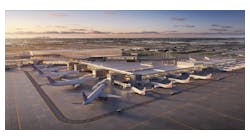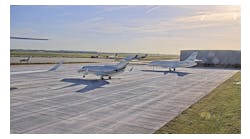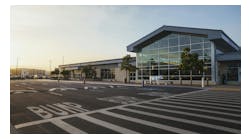Collecting the right passenger data and using it to communicate effectively and in a timely and appropriate way is key to building better relationships between airports and passengers. Not only can improved communication help to secure longer term loyalty, but it can also increase passenger engagement and drive higher spend. But when it comes to communication many airports and their passengers are not on the same page or even the same planet and to channel the famous 90s relationship guide, airports could be said to be from Mars, while their passengers are from Venus. Here are some suggestions on how to improve the relationship between airports and the people who matter most to them – their passengers.
The airport is evolving from somewhere that has to be tolerated in order to travel, into a location where people actually want to spend time. In a new study, conducted by ICLP, more than half (53 percent) of passengers said the airport was an enjoyable part of the journey. And yet while passengers are more likely than ever to treat the airport as "the start of their journey," airports still see themselves as a functional part of getting travelers from A to B, rather than as an active part of the emotionally engaging experiences that passengers seek.
Our research shows that airports tend to overestimate the importance of operational features, failing to appreciate that giving their passengers a memorable experience can make a huge difference when it comes to choosing one airport over another. For example, while 97 percent of airports rated proximity to home or office as an important priority for travelers, only 66 percent of passengers felt the same. Similarly, 83 percent of airports said cost of transport to the airport was a factor, but a significantly smaller 68 percent of passengers agreed.
However, when we look at the more experiential elements, the picture is reversed. While, nearly half (48 percent) of passengers were interested in a choice of food and drink outlets, none of the airports taking part in the survey put this among their top considerations. The situation is similar when it comes to a good choice of retail outlets. Well over a third of passengers (38 percent) say that this is a top concern, but only 3 percent of airports agree.
Though the importance of non-aeronautical revenue is clear, it’s also evident that by not understanding the real needs and motivations of their passengers, many airports could be leaving potential revenue on the table.
This revenue can be substantial, but it shouldn’t be taken for granted. Figures released in May from a study commissioned by Tax Free World Association showed that total global duty free and travel retail sales at airports grew to $36.2 billion – a significant sum. However, this is a relatively modest 1.9 percent increase on the previous year's figure. Drilling further down into the data confirms that there is no room for complacency. It was only strong growth of 9.1 percent in the Asia Pacific region that tipped the global figure into the positive, and in all other regions sales declined. The retail pie, it would appear, is in many cases getting smaller and airports have to work even harder to get a bigger slice. Understanding what customers really want - and then delivering it – is vital if airports are to make the best of this essential revenue stream.
Communication is key
One way airports can boost this revenue is by improving the way they communicate with passengers. But again, our research shows that there is something of a mismatch in this area. While 83 percent of passengers say that they would like to receive updates about departure and arrival times, only 58 percent of airports are providing this information. At the same time, 89 percent of airports are sending details and promotions about airport parking however only 31 percent of passengers are actually interested in receiving this information.
A significant 23 percent of passengers say they never receive any information from the airport at all, and of these, 65 percent say they were never given the chance to subscribe to it. Only around four in 10 of passengers say they feel encouraged to engage more with airports by the communications they receive, with just 41 percent saying they receive discounts and offers that encourage them to shop or dine. Only 38 percent say that the communications they receive encourage them to spend more time at the airport. This is despite the fact that 45 percent of passengers stated that they would spend more if they received offers or discounts in advance of traveling.
Timing is everything
Of course, any communication needs to be timely but the good news is that passengers are keen to hear from airports at all stages of their journey. Fifty-five percent of passengers stated that they would like to receive information on the day of travel, 47 percent would like to receive information at any time after booking a flight and 25 percent would like to receive information when at the airport. Eleven percent are even happy to receive information when they have passed through security.
Getting personal
Like any conversation, it’s difficult for communication with a passenger to be relevant unless it’s personal. Where airports have invested in passenger communication, there has been a clear direction toward mass communication channels, with 83 percent of airports saying they communicate via social media. This combined with the fact that a significant number (54 percent) of airports said they didn’t use individual passenger data to personalize communications suggests that airports do not really know their passengers.
This inevitably makes the personalization of communications harder and yet again, many airports are missing a trick with few making the best of the data at their disposal. All of the airports surveyed give passengers free access to public Wi-Fi but only 48 percent collect data from passengers logging on to that network. Similarly, under a third (32 percent) collect boarding pass details from retailers when passengers make a purchase. This again is particularly concerning in light of the fact that 86 percent of passengers say they would be willing to share personal information and flight details in exchange for benefits such as discounts.
When airports do collect data, they rarely use it to maximum effect, with just 45 percent of airports saying they use the information they collect in their marketing campaigns and a shocking 23 percent confessing that they don’t use it at all.
The secret of commercial success
On the high-street, many retailers are taking steps to collect and use data from their customers to improve their communications. In order to be commercially successful, airports need to adopt similar strategies. An airport’s nonaeronautical revenue’s growth depends on starting a conversation with each and every traveler, collecting the right data from that conversation and using it intelligently to really understand who passengers are and what they want from their time at the airport. Only then can airports begin to unlock longer-term loyalty and maximize engagement and spend.







